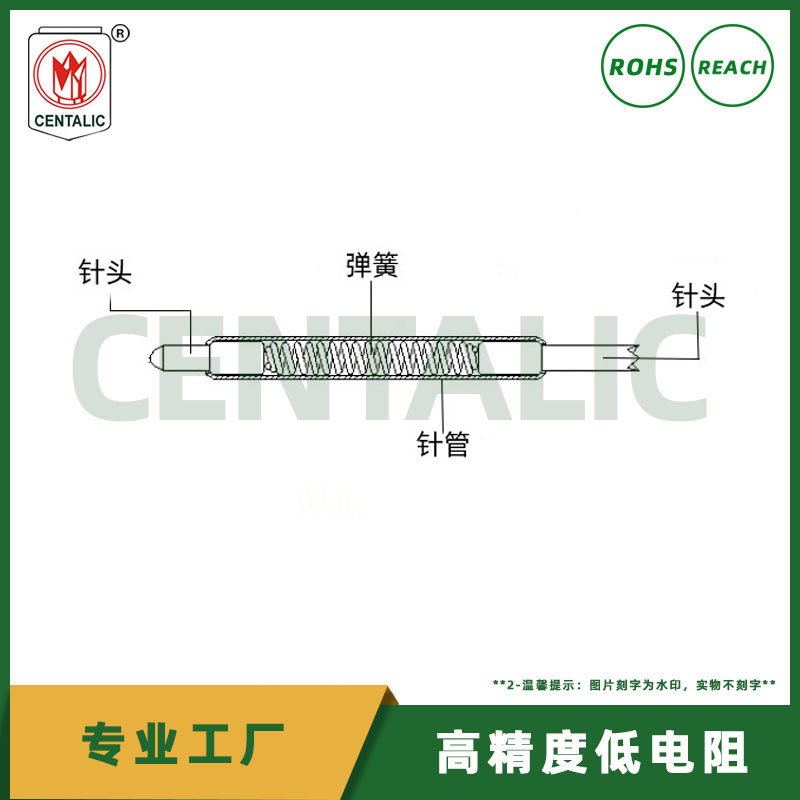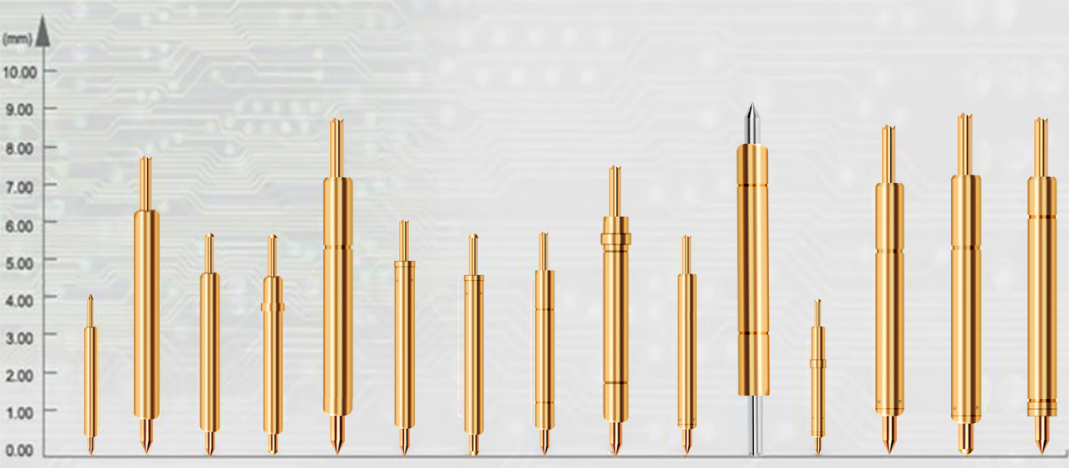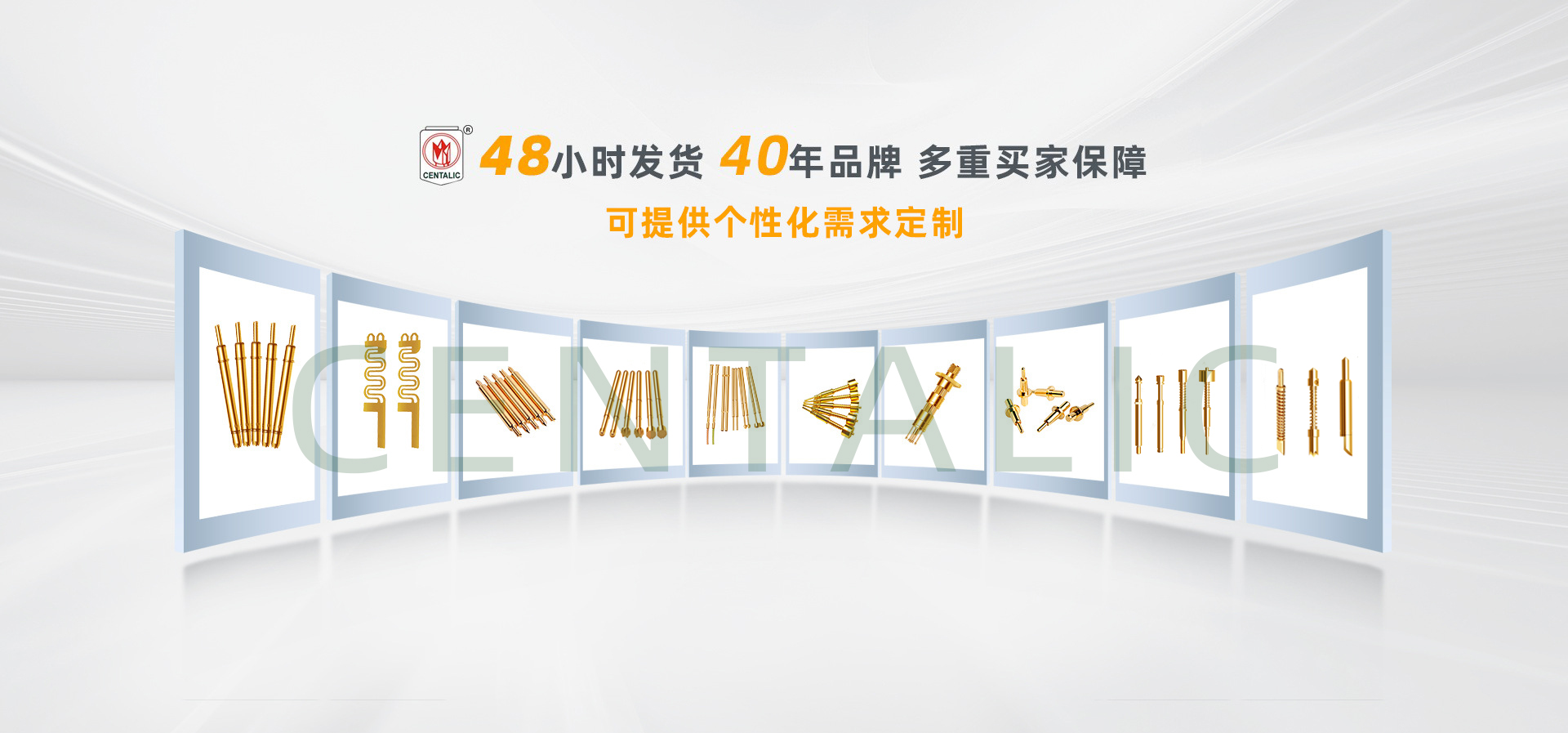
Time:2025-11-07Reading:811Second
Recently, the 'gold tax' has become a hot topic. You may think that it is only related to gold investment and the jewelry market, far from the lives of ordinary people. But have you ever thought that this policy, through an invisible industrial chain, may quietly affect the prices of electronic products in our hands? And all of this is closely related to the testing probe, which, although small in size, is an indispensable "testing officer" in the electronic manufacturing industry.

01
Probe: The 'Golden Key' Behind Electronic Devices
What is a testing probe?
It is an indispensable 'tester' in the electronic manufacturing process. Any circuit board, chip, etc. must undergo precise "diagnosis" with a testing needle before being installed in your device to ensure smooth signal flow and perfect performance. You can imagine it as a high-precision 'metal embroidery needle'.
Composition of Test Probe
The test needle is mainly composed of three basic components: needle tip, needle tube, and spring, which are pre pressed by precision instruments through riveting. Due to the extremely small size of semiconductor products, especially chips, the size of test needles is required to reach the micrometer level, which requires a high level of manufacturing technology.

During wafer or chip testing, the function of the test needle is to achieve precise connection between the wafer/chip pins or solder balls and the testing machine, thereby completing signal transmission and detecting performance indicators such as conductivity, current, functionality, and aging of the product. Test needles for different purposes may have differences in appearance, but they all have precise spring structures inside. Moreover, the surface of the product is usually gold-plated, which gives it strong corrosion resistance, excellent electrical performance, stable working condition, and long-lasting service life.

In addition, factors such as the structural design, material selection, and elasticity of the test needle can affect its stability, degree of refinement, and signal transmission accuracy, thereby affecting the testing accuracy of the test needle.
Why does it have to be gold?
The reason why gold is difficult to replace is due to its unique physical properties:
Has good conductivity, can reduce resistance, and improve the stability and accuracy of signal transmission;
High chemical stability, not easily oxidized, can effectively prevent rusting of test probes, and extend the service life of probes;
Relatively low hardness, good ductility, easy polishing, suitable for various testing environments and contact methods.

02
A piece of official document, how to pry open your wallet
The new gold tax policy essentially increases the cost of using gold, the most essential raw material in probe manufacturing. This' surgical knife 'precisely cuts into the' blood vessels' of the electronic manufacturing industry.
The most direct impact: an increase in probe manufacturing costs
Just as the price increase of flour leads to the price increase of bread, the gold tax directly pushes up the raw material and compliance costs of probe companies.
Invisible pressure: the dilemma of "bleeding" of corporate working capital
Due to gold being a high-value metal, companies need to advance a large amount of funds when purchasing, and the increase in tax burden requires more working capital support for the same production scale. This is like a person suddenly needing to provide more deposit to maintain the original business scale, which poses a severe challenge to the cash flow of many small and medium-sized enterprises.
Transmission of supply chain: Who pays for the increased tax burden?
The cost increase caused by the gold tax is actually being redistributed throughout the entire electronic manufacturing industry chain. From gold salt suppliers, electroplating factories to probe manufacturers, to chip testers and end brands, each link is recalculating its profit margin and attempting to maintain balance through price adjustments. The endpoint of this reaction is the re anchoring of market prices. Eventually, this part of the cost may be cleverly woven into the final pricing structure of the product through layers of infiltration.
03
Industry reshuffle: a challenge about "survival"
This tax induced storm is causing a huge wave within the probe industry, accelerating the differentiation of enterprises.
Top enterprises:With its strong capital and scale advantages, it can lock in costs through futures instruments and concentrate on purchasing to lower unit prices. For them, this crisis is actually a strategic opportunity for industry consolidation and market share expansion.
Small and medium-sized manufacturers:Trapped in the toughest survival battle. They must make a choice: either focus on surviving in an extremely niche field, or be eliminated due to the inability to bear cost pressure.
This reshuffle will ultimately reshape the ecology of the industrial chain. As industry concentration continues to increase, downstream electronic product brands may find their selection of probe suppliers narrowing. This not only concerns the stability of the supply chain, but also means that the core testing process that drives our smart devices in the future, with its technical standards and pricing discourse power, may be more controlled by a few industry giants.
04
Outlook: Under challenges, hidden opportunities
The implementation of the gold tax policy has brought significant operational pressure to the probe industry in the short term, but in the long run, it also provides an important opportunity for the industry to move towards high-quality development. Under policy guidance, enterprises will pay more attention to technological innovation and refined management, promoting the overall competitiveness of the industry. In the future, the competitive landscape of the probe industry will gradually shift from homogeneous price competition to differentiated value competition, and technological strength, management level, and strategic vision will become key factors for the sustainable development of enterprises.
So, the 'golden tax' is far more than just a financial news. It is a vivid economics class that shows us how a macro policy, through a sophisticated industrial chain, ultimately makes subtle connections to everyone's digital life.
The next time you pick up your phone, you may think of countless invisible "golden contacts" shining beneath this smooth glass and metal. They not only connect circuits, but also global industries, policies, and the daily lives of each and every one of us.





